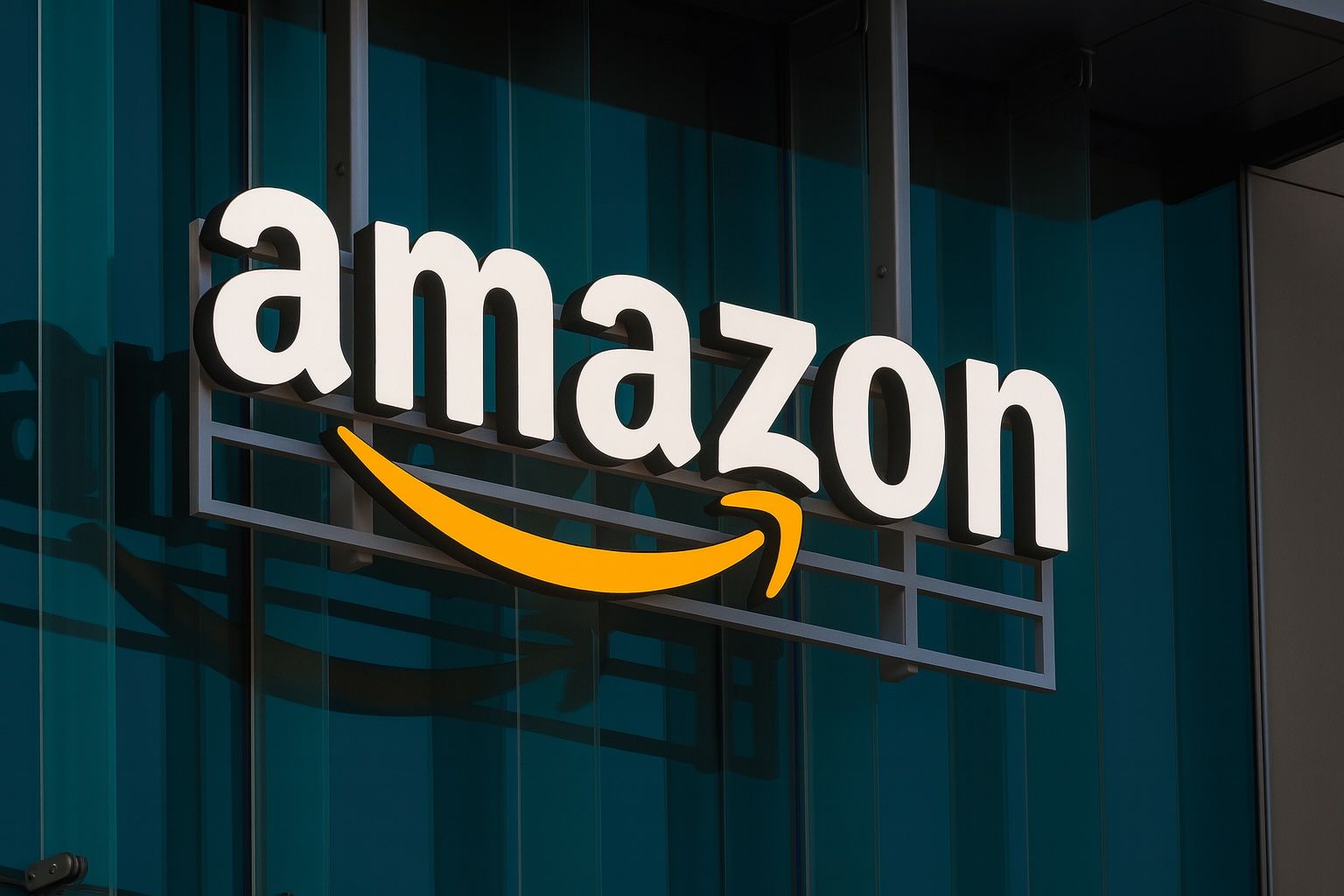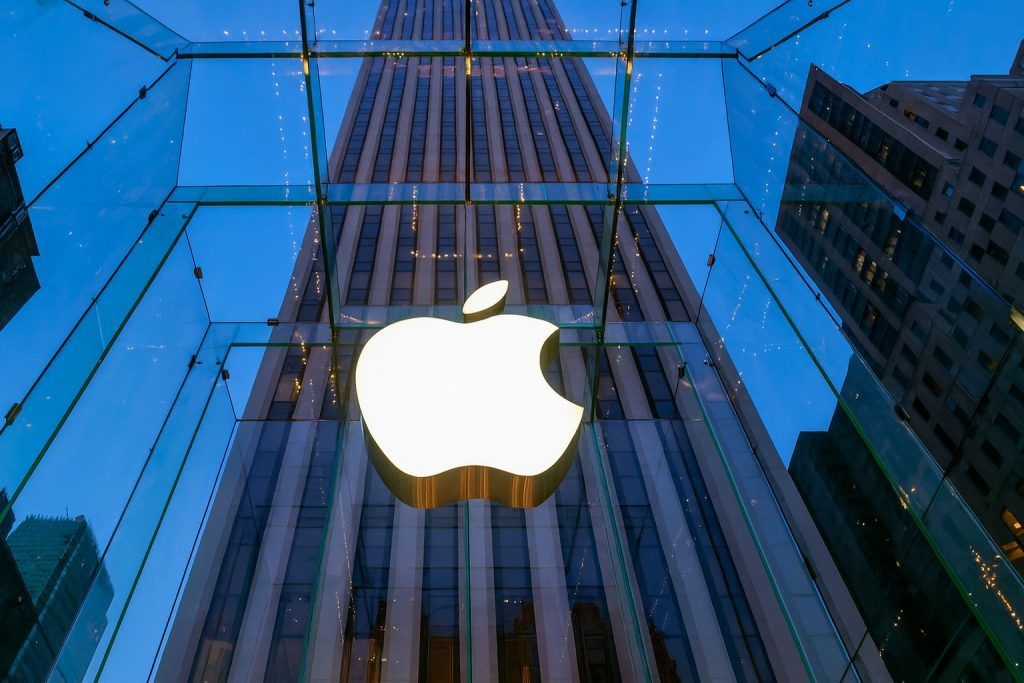Amazon’s share price is trying to stabilize today, November 20, 2025, after a bruising pullback from record highs earlier this month. Around mid‑afternoon in London, Amazon.com Inc. (NASDAQ: AMZN) was trading near $227 per share, up almost 2% on the day, leaving the stock roughly 12% below its all‑time high around $259 set on November 3. [1]
Behind that relatively modest bounce sits a very busy news tape: a high‑profile analyst downgrade on AI capex concerns, fresh bullish earnings revisions, continued fallout from the EU’s new cloud investigation, a $3 billion data‑center commitment in Mississippi, and ongoing enthusiasm around Amazon’s $38 billion OpenAI cloud deal.
Below is a structured look at what’s moving Amazon stock today, and what investors are watching next.
Amazon stock price today: stabilizing after a sharp pullback
- Intraday move: As of about 15:49 GMT, Amazon shares were trading around $226.87, up 1.9% on the session, with an intraday range of roughly $225–$227. [2]
- From record high: The stock is still about 12% below its 52‑week (and record) high of $258.60, reached on November 3, 2025, after the OpenAI cloud deal headlines. [3]
- Year‑on‑year: Despite the recent slide, Amazon is still up around 12% over the past 12 months, with a market cap near $2.4 trillion and a trailing P/E just over 31. [4]
- Longer term context: From early 2006 through this week, Amazon’s share price has risen more than 9,000% on a split‑adjusted basis, underscoring how sensitive long‑term holders are to any hint that its growth story could slow. [5]
Technically, several analysts note that the stock has dropped 8–10% in just a few sessions and formed a “hammer” pattern, a candlestick configuration often interpreted as a potential short‑term bottom after sellers exhaust themselves. [6]
The big story today: Redburn’s AI “bear” downgrades Amazon on capex worries
The most widely discussed catalyst today is a contrarian downgrade from Alex Haissl of Rothschild & Co Redburn, who cut both Amazon and Microsoft to a more cautious stance after years of bullish ratings. [7]
Key points from Haissl’s argument, as summarized in Business Insider, QuiverQuant and other outlets:
- AI ≠ old cloud economics: The analyst argues that investors are pricing generative AI infrastructure as if it will deliver the same high‑margin “cloud 1.0” economics that powered AWS’s early growth, but the numbers don’t add up. [8]
- Capex intensity: Redburn estimates that building GPU capacity for frontier AI can cost on the order of $40 billion per gigawatt of power, while each equivalent unit may bring in closer to $10 billion in revenue—a mismatch that could make some projects economically unattractive if hardware needs frequent replacement. [9]
- Short GPU lifespans: With AI chips often needing to be refreshed every few years, the firm warns that high replacement costs could render AI build‑outs “value‑destructive” unless pricing and utilization are exceptionally strong. [10]
- Market already pulled back: Redburn notes that Amazon and Microsoft have already fallen around 10–13% from recent peaks, but argues that expectations for AI‑driven returns are still too optimistic relative to the capital being spent. [11]
A companion piece at 24/7 Wall St. frames the downgrade as a “brave” but lonely call in a market where most Wall Street houses remain bullish on mega‑cap tech and still see upside in Amazon over the next 12–18 months. [12]
Meanwhile, social‑media and options‑market chatter tracked by QuiverQuant shows investors split: some fear AI spending will suppress free cash flow for years, while others argue today’s capex will underpin a long‑lived competitive moat in cloud and AI infrastructure. [13]
OpenAI’s $38 billion AWS deal: the structural bull case in the background
The downgrade lands just weeks after arguably the most important structural positive for Amazon’s cloud story in years: OpenAI’s decision to sign a seven‑year, $38 billion cloud services deal with Amazon Web Services. [14]
According to Reuters and OpenAI/AWS announcements: [15]
- OpenAI will purchase $38 billion of compute from AWS over seven years, gaining access to hundreds of thousands of Nvidia GPUs and Amazon’s custom Trainium‑based clusters for training and running future generations of ChatGPT‑style models.
- The deal ends Microsoft’s near‑exclusive grip on OpenAI’s cloud workloads and signals OpenAI’s move toward a multi‑cloud strategy, which also includes large contracts with Microsoft Azure, Google Cloud and Oracle. [16]
- The announcement propelled Amazon shares to record highs earlier this month, adding around $140 billion in market value in just days as investors reassessed AWS’s role in the AI race. [17]
In short, today’s pullback and cautious calls are happening against a backdrop of one of the biggest AI cloud wins Amazon has ever landed. Commentators on Seeking Alpha and other platforms today characterize the OpenAI partnership as a “game changer” for AWS’s long‑term growth, even if near‑term margins are pressured by the massive hardware build‑out it requires. [18]
EU cloud investigation: regulatory overhang that won’t go away
Another key piece of context for Amazon investors this week is the European Commission’s new probe into cloud services, announced on November 18. [19]
Under the EU’s Digital Markets Act (DMA), regulators have launched three market investigations covering Amazon Web Services and Microsoft Azure:
- Two probes will examine whether their cloud offerings should be designated as “gatekeeper” services, which would bring extra obligations, including interoperability and limits on self‑preferencing.
- A third will assess whether existing DMA rules are sufficient to tackle potential anti‑competitive practices in the cloud sector. [20]
The Commission aims to finish the investigations within 12 months, and violations could carry fines of up to 10% of global annual turnover—a non‑trivial risk for a company of Amazon’s size. [21]
Coverage from crypto‑ and tech‑focused outlets notes that Amazon’s stock slipped nearly 1% on Tuesday as traders digested the probe, though the move was modest relative to the earlier pullback from the OpenAI‑driven highs. [22]
AWS expansion: $3 billion Mississippi data center plan underscores capex debate
On the capex front, Amazon added fuel to both the bull and bear narratives today with fresh infrastructure news.
In a corporate announcement, Amazon said it plans to invest $3 billion in new data centers in Warren County, Mississippi, to support AWS growth and local economic development. The project is expected to create hundreds of jobs and is framed as part of a broader community investment strategy. [23]
This comes on top of what management has already described as a dramatic expansion of AWS’s power and data‑center footprint:
- AWS now operates with roughly double the power capacity it had in 2022, according to CEO Andy Jassy.
- It is on track to double that capacity again by 2027, with at least 1 gigawatt of additional power slated to come online in the current quarter alone—much of it tied to generative AI workloads. [24]
For bulls, these announcements show Amazon leaning hard into AI and cloud demand just as OpenAI and Anthropic sign multi‑billion‑dollar compute agreements across the industry. (Notably, Microsoft’s new partnership with Anthropic still leaves Amazon as Anthropic’s main cloud and training partner, highlighting AWS’s central role in the AI stack. [25])
For bears, today’s Mississippi announcement is another reminder that AWS’s AI ambitions come with an enormous and ongoing capital bill—exactly the issue Redburn’s downgrade is focused on.
Holiday season tailwind: Black Friday Week and strong Q3 retail numbers
While the market obsesses over AI, the retail engine that still generates the bulk of Amazon’s revenue is ramping into its most important season.
Black Friday Week kicks off
Amazon has officially launched Black Friday Week, promoting “65+ of Amazon’s best Black Friday deals” across marquee brands like Bose, Nike, LEGO and Dyson, with aggressive discounts running ahead of the Thanksgiving weekend. [26]
The event builds on what the company called its “biggest Prime Day ever” this summer and is aimed at keeping shoppers inside the Amazon ecosystem as competitors—from Walmart and Target to discount‑driven online marketplaces—fight for budget‑conscious consumers. [27]
Q3 earnings still look solid underneath the noise
Several research notes out today continue to highlight how strong Amazon’s September‑quarter results were:
- Q3 2025 revenue reached roughly $180–180.2 billion, up about 12–13% year on year, making it the second‑largest quarter in Amazon’s history after Q4 2024. [28]
- AWS revenue grew about 20% year on year to ~$33 billion, while North America and international retail also delivered double‑digit growth. [29]
- Advertising revenue surged roughly 22% year on year to about $17.6 billion, highlighting the growing profitability of Amazon’s ad business. [30]
Zacks’ sector‑wide earnings review, highlighted today on Nasdaq, points out that Amazon helped drive better‑than‑expected Q3 earnings growth for the broader retail sector, with a higher‑than‑normal share of companies beating expectations on both revenue and EPS. [31]
Wall Street today: higher earnings estimates but a wider spread of opinions
Despite Redburn’s high‑profile downgrade, the overall analyst backdrop remains positive:
- Zacks Research today raised its Q3 2027 EPS estimate for Amazon from $1.94 to $2.45, keeping a “Strong Buy”rating on the stock and noting that Amazon’s most recent quarter beat consensus on both EPS and revenue. [32]
- MarketBeat data still classifies Amazon as a “Moderate Buy” based on a large sample of analyst ratings, with an average price target near $295, implying material upside from current levels. [33]
- Individual price targets remain clustered in the $250–315 range at firms such as Redburn (despite the downgrade), Mizuho, Rosenblatt, J.P. Morgan, Stifel and Cantor Fitzgerald. [34]
On the trading‑strategy side:
- A Zacks technical note circulating through Finviz today describes Amazon as “ripe for bottom‑fishing” after an 8.8% weekly slide, citing the recent hammer pattern as evidence that sellers may be losing control. [35]
- Simply Wall St published a valuation‑focused piece this morning noting that Amazon shares are up about 3% over the past month but still trade below many fair‑value estimates based on discounted cash flow models, even as growth expectations normalize. [36]
Put differently: the sell‑side is more divided than it was even a month ago, but the center of gravity is still firmly on the bullish side, with the main debate about how bumpy the AI investment cycle will be rather than whether Amazon’s long‑term prospects are intact.
Fund flows and insider activity: a mixed but not alarming picture
Several new filings and alerts today provide some color on who’s buying and selling Amazon stock under the hood:
- Nisa Investment Advisors LLC modestly increased its stake in Amazon during Q2, adding just over 6,000 shares to reach roughly 2.0 million shares worth about $439 million, making AMZN its 6th‑largest position at around 2% of its portfolio. [37]
- In contrast, Oppenheimer Asset Management disclosed that it trimmed its Amazon stake by 8.3% in Q2, selling more than 66,000 shares but still leaving Amazon as its third‑largest holding at roughly 1.9% of the portfolio. [38]
- Both filings also highlight ongoing insider selling, with executives such as SVP David Zapolsky, Director Jonathan Rubinstein, Director Keith Brian Alexander and CEO Doug Herrington collectively selling tens of thousands of shares over the last 90 days—sales that appear routine for compensation management rather than a major strategic signal. [39]
- Separately, a new Form 144 filing today shows Director Daniel P. Huttenlocher planning to sell 1,237 shares of Amazon pursuant to a pre‑arranged Rule 10b5‑1 trading plan—tiny in the context of Amazon’s 10.7 billion shares outstanding. [40]
Taken together, institutional and insider activity looks mixed but not extreme: some profit‑taking after a big run, balanced by long‑only funds that continue to accumulate.
How today’s news fits the bigger Amazon thesis
Bringing it all together, here’s how today’s headlines plug into the broader Amazon investment narrative:
- AI and cloud remain the central story.
- The OpenAI deal, Anthropic partnership, rapid expansion of AWS capacity and focus on agentic AI all reinforce Amazon’s position as a core infrastructure provider for next‑gen AI workloads. [41]
- The cost of that ambition is the key risk.
- Redburn’s downgrade and social‑media debate highlight genuine concerns that AI capex may prove less profitable than investors hope, especially if hardware needs frequent upgrades and competition keeps pricing in check. [42]
- Regulation is a growing wild card.
- The EU’s DMA cloud probe adds uncertainty around how freely AWS can bundle services, price at scale, and maintain its current margins in Europe. [43]
- The retail engine is still humming.
- Strong Q3 results, a record‑setting Prime Day, and an aggressive Black Friday campaign suggest Amazon’s core commerce and advertising businesses continue to generate the cash flow that funds its AI push. [44]
- Valuation is no longer cheap, but not consensus “bubble” territory.
- With a P/E in the low 30s and consensus price targets implying upside, Amazon sits in a middle ground: not a bargain basement value play, but not obviously over‑the‑top given its growth profile and AI exposure. [45]
What to watch next
For investors following Amazon after today’s moves, several upcoming data points and themes will matter:
- How quickly AI capex translates into revenue and margin gains at AWS—especially from large contracts like OpenAI and Anthropic.
- Updates on the EU cloud investigation and any early signals about gatekeeper remedies or interoperability requirements. [46]
- Holiday sales performance, including Black Friday and Cyber Monday metrics, as a test of consumer resilience and Amazon’s logistics advantage. [47]
- Management commentary on 2026–2027 investment plans: whether they choose to lean even harder into AI infrastructure or moderate capex to appease cautious shareholders. [48]
Bottom line on Amazon stock today – November 20, 2025
On November 20, 2025, Amazon stock is caught between two powerful narratives:
- A bullish, long‑term story built on dominant e‑commerce, a rapidly scaling ad business, and a central role in the global AI compute race, reinforced by landmark deals like the $38 billion OpenAI partnership. [49]
- A more cautious near‑term view centered on eye‑watering AI capex, fresh regulatory scrutiny and the risk that even a company as large as Amazon can overspend on infrastructure that takes longer than expected to pay off. [50]
Today’s modest rebound shows that buyers are still willing to step in on weakness, but the days of one‑way optimism in mega‑cap tech are clearly over. For now, Amazon remains a high‑conviction name for many institutions and analysts, yet also a lightning rod for debates about whether the AI boom will ultimately enhance or erode shareholder value.
Important note
This article is for informational and news purposes only. It does not constitute financial advice, investment recommendation, or a solicitation to buy or sell any security. Anyone considering an investment in Amazon or any other stock should evaluate their own financial situation and risk tolerance and, if needed, consult a qualified financial adviser.
References
1. markets.ft.com, 2. markets.ft.com, 3. markets.ft.com, 4. markets.ft.com, 5. www.statmuse.com, 6. finviz.com, 7. www.businessinsider.com, 8. www.businessinsider.com, 9. www.businessinsider.com, 10. www.businessinsider.com, 11. www.businessinsider.com, 12. 247wallst.com, 13. www.quiverquant.com, 14. www.reuters.com, 15. www.reuters.com, 16. www.reuters.com, 17. www.reuters.com, 18. seekingalpha.com, 19. www.reuters.com, 20. www.reuters.com, 21. www.reuters.com, 22. coincentral.com, 23. www.aboutamazon.com, 24. www.digitalcommerce360.com, 25. www.theverge.com, 26. www.aboutamazon.com, 27. www.digitalcommerce360.com, 28. www.digitalcommerce360.com, 29. www.digitalcommerce360.com, 30. www.digitalcommerce360.com, 31. www.nasdaq.com, 32. www.marketbeat.com, 33. www.marketbeat.com, 34. www.quiverquant.com, 35. finviz.com, 36. simplywall.st, 37. www.marketbeat.com, 38. www.marketbeat.com, 39. www.marketbeat.com, 40. www.tradingview.com, 41. www.reuters.com, 42. www.businessinsider.com, 43. www.reuters.com, 44. www.digitalcommerce360.com, 45. markets.ft.com, 46. www.reuters.com, 47. www.digitalcommerce360.com, 48. www.digitalcommerce360.com, 49. www.reuters.com, 50. www.businessinsider.com







